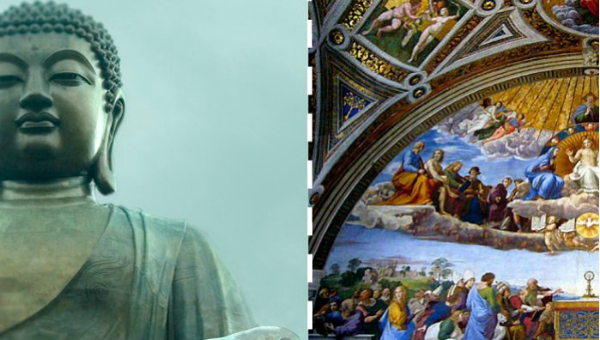
By Russ Levanway, CEO
I recently read a book that addresses the question of how to grow a business while retaining quality and efficiency called Scaling Up Excellence: Getting to More Without Settling for Less by Robert I. Sutton and Huggy Rao. One key question in the book is “do you run your business with a Buddhist or a Catholic philosophy?”
Before we get too far, I’ll assure you that this isn’t a question of religion – it’s one of organizational styles. According to Sutton and Rao, businesses that operate in a “Catholic” manner are highly structured and rigid, with little variation in how processes are conducted; while those on the Buddhist end of the continuum subscribe to an overall value system, but individuals live that system out in a variety of ways within the company.
In the Beginning
Many businesses start Buddhist-style, wherein each employee believes in what the company is doing but has his or her own choices to make. Ideas flow and people feel free to be creative. The risk is that no two people operate the same way, balls are dropped and the standard for how people interact and operate is dangerously unstructured.
On the flip side, Catholic-style businesses can feel like an assembly line in which operations are executed the same way, documented the same way, and laid out rigidly without much deviation. The benefit to that model is an organization that scales very well, growing without losing its flavor or efficiency. Downsides include the risk of replicating mediocrity, and the discouragement of creativity and innovative thinking.
Out of Balance
Several years ago, TekTegrity was very “Catholic.” Our core Help Desk was almost like an assembly line where each service request flowed through a consistent experience to the user – which sounds nice, but looking back, it was too inflexible. In surveys and informal feedback gathering, our clients gave us an average grade of B/B-.
In other words, we were consistently “OK”.
We rarely lost a client, but we also rarely gained client champions. At the same time, staff morale seemed low and it was hard to put our finger on exactly why. Our awesome Tech team would come in the morning, do the work assigned, and leave for the day. Being “Catholic” allowed us to be consistent, but it didn’t allow us to make adjustments based on the strengths of the technical team, or uniqueness of our clients. It was time to reassess our processes and take a more Buddhist approach, realizing that each client has different expectations, and that each technician needs more personal ownership to be effective.
The Buddhist Way
One practical way we became more “Buddhist” was by starting an internal innovation discussion among our technical team that uses customer feedback to change how we support both clients and technicians on the front line. Through that process, we restructured our technical support team from one large group to three (and eventually, to five), with each group customized in skills and process for specific types of clients.
The technicians in each of these groups have greater ownership with their unique clients now, and both the technicians and clients feel the impact of that change. In fact, the number of technicians who answered “yes” to the employee satisfaction survey question “Do you believe your feedback will be acted upon by TekTegrity?” doubled within just six months after the restructuring.
Striking a Balance
One of Chief Operations Officer Jeremy Koellish’s most important tasks is to observe our operations across TekTegrity and assess if they are striking the right balance between a consistent, replicable structure and encouraging creativity and innovation. Fundamentally, there are some operations that we feel have to be Catholic, and we find that the degree in which this is so relies heavily on whether or not the process is structural or client facing.
For example, our Backup Team needs to be highly structured, very black-and-white. Performing responsible, reliable backup requires correct timing and protocol, and we are understandably very rigid about that process. However, our Help Desk thrives with the injection of a little Buddhism – flexibly addressing each individual customer concern as it comes into the system.
An organization cannot scale up unless it’s consistent and easily understood, so if you’re trying to grow your business but keep hitting a wall that can’t be pushed through, ask yourself: Is there a lack of consistency here? Is there too little documentation and standardization, causing operations to collapse? Is this system too rigid to allow for much-needed flexibility? If you found yourself answering “yes” to any of these questions, then it may be time to check your Catholic / Buddhist balance.
